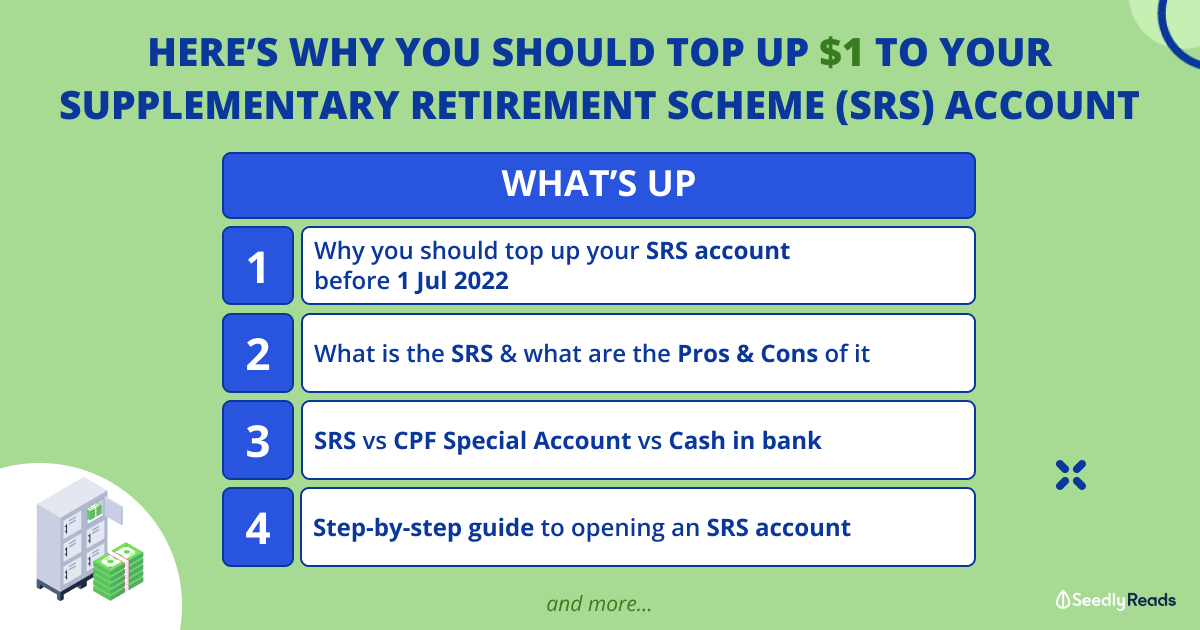Advertisement
Anonymous
Can the retirement age still be 62 if we do SRS and delay RA payout at 70?
Pls advise if I am correct. Assuming $15.3K is invested in SRS for 25 yrs with annualized return 2% (I am being conservative here). At age of 62, the SRS will be around 490K. At age 62, can the person withdraw 50% tax free and annual drawdown remaining 24K for next 10 yrs tax free as well? Since there is lumpsum and 24K yearly, it can support basic need for retirement. The person should delay CPF life till age 70 to earn another 5 yr more interest. Is that right?
1
Discussion (1)
What are your thoughts?
Learn how to style your text
Elijah Lee
25 May 2020
Senior Financial Services Manager at Phillip Securities (Jurong East)
Reply
Save
Write your thoughts
Related Articles
Related Posts
Related Posts
Advertisement









Hi anon,
If you have $490K in SRS and start the drawdown at 62, 50% of the amount withdrawn is deemed as income. So if you withdrawal a lump sum of $240K and intend the rest to be withdrawn in later years, $120K will be deemed as income that year and you will be taxed on that. You should instead withdraw $49K and only $24.5K will be deemed as income, for which you will be taxed on $4.5K as the first $20K has no income tax.
Next, let's look at 'basic need'. Fundamentally, when you retire, you need income. This means you'll need income generating assets so that you will at least have the money for the basics necessities. Now the issue is, what are the monies invested in? If they are in the form of guaranteed instruments, then there's no issue. If they are in the form of, say, stocks, then you must be careful as a lot depends on the economy at the point of the withdrawal. If the market is down, you might have to liquidate at a loss. If you just wanted to keep the stocks and rely on the dividends, you might find that the dividends were cut (it's happening a lot this year). A multi asset allocation will mitigate this risk while providing some upside.
Thus, the allocation of your entire portfolio, not just the SRS assets, will be important in order to enable you meet your basic needs in retirement.
If you manage to achieve this, and $4K/mth is sufficient, then you can definitely consider delaying CPF Life till 70 for the higher payouts, which will kick in and overlap the period when SRS withdrawals end.